Current flowing through a conductor is directlry proportional to potential difference across its ends provided physcial state of the conductor remains constant
V ∝ I
V = Constant x I
V = IR
Where R is a constant of proportionality called resistance and its value depends on:
- Nature
- Dimensions
- Physical state of the conductor
Resistance
The opposition to the flow of charge by the conductor is called resistance due to the collision between atoms of the resistor and free electrons.
Ohm
The unit of resistance is the ohm. 1ohm is defined as a current of 1Ampere flows through a conductor when a potential difference of 1Volt is applied across its end.
R=V/I ; 1ohm=1Volt/1Ampere
Ohm = VA-1
Related material:
- Electric Force vs Gravitational Force
- Electric Current
- Applications of Electrostatics
- Geometrical optics Chapter MCQs
Ohmic and Non-Ohmic Conductors
A conductor which strictly obeys ohm law is called ohmic, if we plot a graph between V & I. It should be a straight line for ohmic materials.
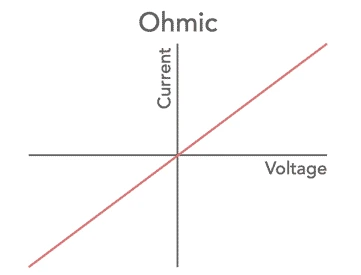
A conductor which does not obey ohm’s law is called non-ohmic material, for example, the Filament of the bulb and a semiconductor diode.
1. Filament of Bulb
If we apply a potential difference to a bulb’s filament and measure current after some time we found that voltage and current do not remain directly proportional and the graph between V & I is no longer a straight line, because after some time as temperature increases and current decreases, so V & I do not remain directly proportional. Hence violating ohm’s law.
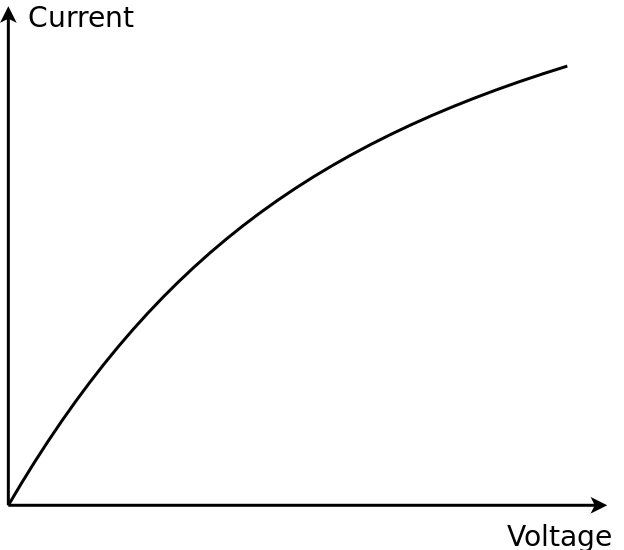
2. Semiconductor Diode
A semiconductor diode is also a non-ohmic V-I graph showing that it is not a straight line, so a semiconductor diode is a non-ohmic device.
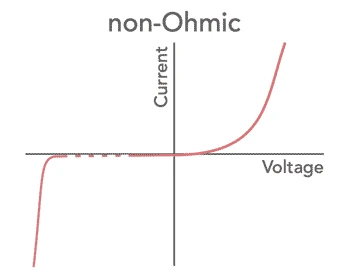
Series Combination of Resistor
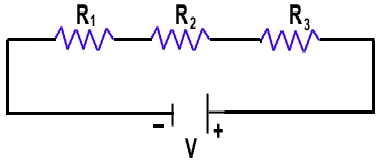
When resistors are connected end to end so that some amount of current passes through each of them they are said to be connected in series. The equivalent resistance Re is:
Re=R1+R2+R3+….
- The equivalent resistance increases.
- The current remains the same.
- Potential difference (voltage) divides according to resistors R1, R2, R3, …
Parallel Combination of Resistor
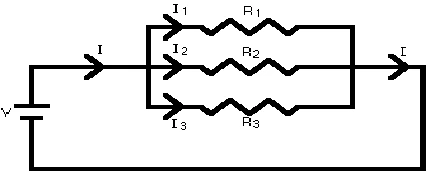
When resistors are connected side by side with ends joined together they are said to be connected in parallel.
1/Re = 1/R1 +1/R2 +1/R3 + …
- Potential difference (voltage) remains the same.
- Current divides according to resistors.
- Equivalent resistance is the smallest.

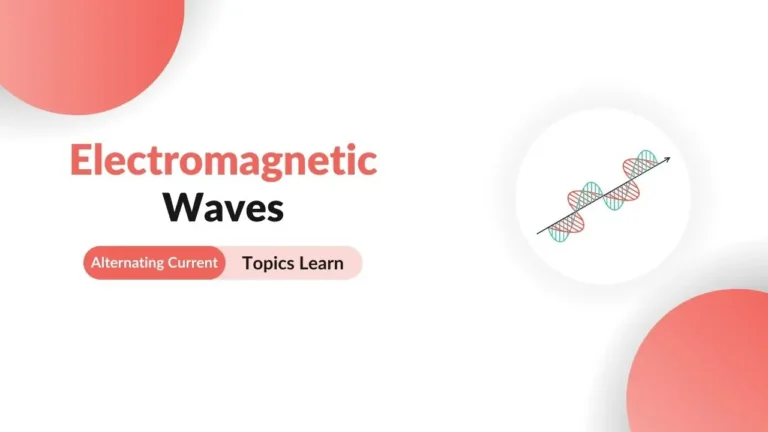

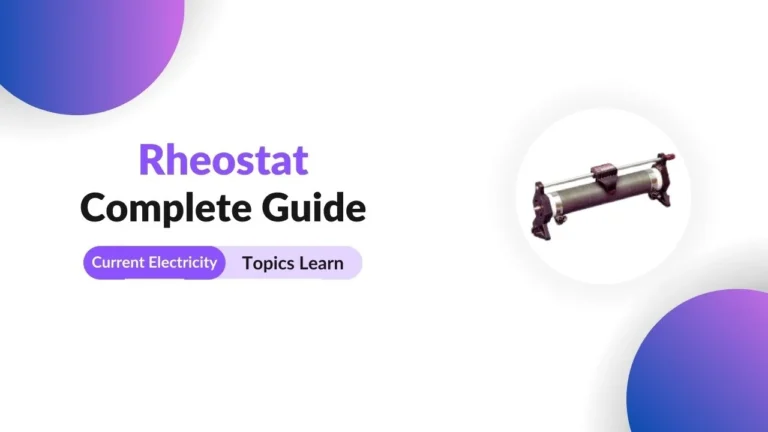
Hello, i think that i saw you visited my weblog so i came to
“return the favor”.I am trying to find things to improve my site!I suppose its ok to use some of your ideas!!
No matter if some one searches for his vital thing, therefore he/she wants to be available that in detail, thus that thing is
maintained over here.